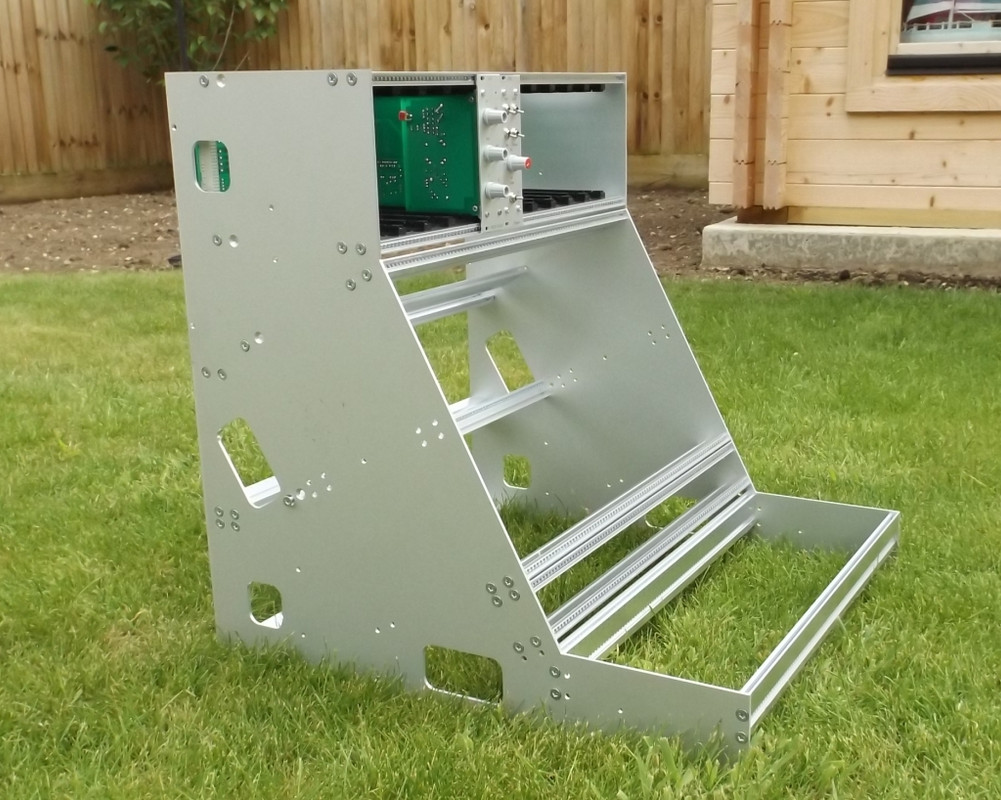ruffrecords
Well-known member
The prototype Mark III tube mixer will be built on a frame that has a 3U space at thr top and the 6U space below it and the faders at the bottom. There are two ways I can juggle the modules that make up the channel strip.
The conventional way would have the mic pre at the top (in 3U), then the EQ in the next 3U down and lastly the routing in the final 3U .
Alternatively I could place the routing in the top 3U. The 6U below would be a complete channel amp - mic pre plus EQ. My personal preference is for this arrangement. First because it means channel amps are stand alone units so you can have different types with different EQs and just plug and play. Secondly, I can rack complete channel amps and sell them. Thirdly, routing is pretty much set and forget so having it at the top of the strip is not really an inconvenience. People tend to change EQ and mic gain more frequently than anything else.
Opinions?
Cheers
Ian
The conventional way would have the mic pre at the top (in 3U), then the EQ in the next 3U down and lastly the routing in the final 3U .
Alternatively I could place the routing in the top 3U. The 6U below would be a complete channel amp - mic pre plus EQ. My personal preference is for this arrangement. First because it means channel amps are stand alone units so you can have different types with different EQs and just plug and play. Secondly, I can rack complete channel amps and sell them. Thirdly, routing is pretty much set and forget so having it at the top of the strip is not really an inconvenience. People tend to change EQ and mic gain more frequently than anything else.
Opinions?
Cheers
Ian



